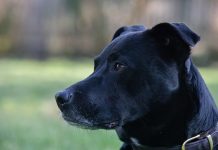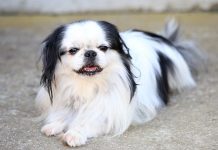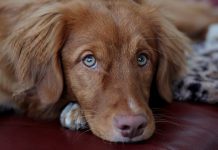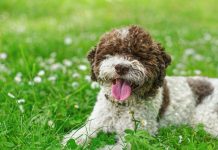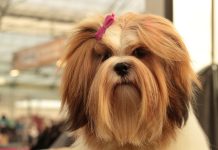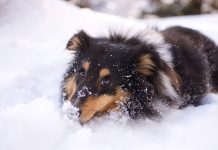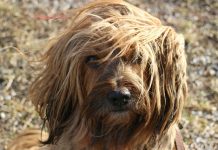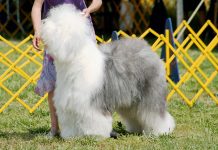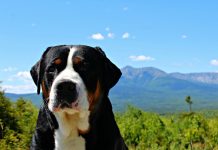History and Origins of the Schnauzer Breed

The Schnauzer is a distinct and versatile breed with a fascinating history that dates back to 15th-century Germany. Here’s a brief overview of the history and origins of Schnauzers:
- Early Origins: The Schnauzer breed is believed to have originated in the southern regions of Germany, particularly around Württemberg and Bavaria. They were developed as versatile working dogs with skills in ratting, guarding, and herding.
- Rat-Catchers and Farm Dogs: Schnauzers were valued for their ability to control pests on farms and serve as loyal guardians of livestock and property. They were also used in breweries and markets to keep rodents at bay.
- Distinctive Appearance: The breed’s name “Schnauzer” is derived from the German word “schnauze,” which means “snout” or “muzzle.” This refers to the breed’s iconic beard and mustache, which were likely bred for functional reasons, such as protecting the face from bites and scratches while hunting vermin.
- Three Sizes: The Schnauzer breed originally came in three sizes: Standard Schnauzer (the original size), Miniature Schnauzer, and Giant Schnauzer. Each size was developed for specific purposes, with the Standard being a versatile farm dog, the Miniature a smaller companion and rat-catcher, and the Giant a larger guard and draft dog.
- Breed Standardization: The Schnauzer breed was standardized in the late 19th century, with efforts to preserve and promote its distinct characteristics. The Standard Schnauzer was the foundation for the other sizes, and all varieties share similar traits such as a wiry coat, alert expression, and spirited personality.
Physical Characteristics and Appearance of Schnauzers
Schnauzers are known for their distinctive appearance and lively demeanor. Here are the key physical characteristics of the breed:
- Size: Schnauzers come in three sizes:
- Standard Schnauzer: Height ranges from 17.5 to 19.5 inches (44 to 50 cm) at the shoulder, with males slightly larger than females. Weight ranges from 30 to 45 pounds (14 to 20 kg).
- Miniature Schnauzer: Height ranges from 12 to 14 inches (30 to 36 cm) at the shoulder, with males slightly larger than females. Weight ranges from 11 to 20 pounds (5 to 9 kg).
- Giant Schnauzer: Height ranges from 23.5 to 27.5 inches (60 to 70 cm) at the shoulder, with males larger than females. Weight ranges from 60 to 85 pounds (27 to 39 kg).
- Coat: Schnauzers have a double coat that is wiry and dense. The outer coat is harsh and straight, while the undercoat is soft and dense. The breed is known for its distinctive beard, mustache, and eyebrows, which are typically trimmed for a tidy appearance.
- Color: Schnauzers come in several colors, including salt and pepper (mixture of black and white hairs), solid black, and black and silver. The coat color should be consistent and well-defined.
- Head: Schnauzers have a strong and rectangular-shaped head with a prominent muzzle. The eyes are oval-shaped and dark, conveying an alert and intelligent expression.
- Ears: The breed’s ears are medium-sized and set high on the head. They are typically cropped to stand erect, although many countries have banned ear cropping for cosmetic purposes.
- Tail: Schnauzers have a docked tail, although some countries prohibit tail docking. The tail is set high and carried erect when alert.
- Gait: Schnauzers have a confident and purposeful gait, reflecting their intelligence and agility. They move with efficiency and energy, suitable for their history as working dogs.
- Overall Impression: Schnauzers are sturdy, compact dogs with a robust build and confident demeanor. They are known for their keen intelligence, spirited personality, and devotion to their families.
Schnauzers make excellent companions and are adaptable to various lifestyles, from city apartments to rural homes. They thrive on mental stimulation, exercise, and companionship with their owners. Proper grooming and regular veterinary care are important for maintaining their health and well-being. Schnauzers are renowned for their loyalty, intelligence, and distinct appearance, making them a beloved breed worldwide.
Schnauzer Temperament and Personality Traits
- Intelligence: Schnauzers are highly intelligent dogs known for their problem-solving abilities and quick learning. They thrive on mental stimulation and enjoy engaging activities.
- Lively and Alert: Schnauzers have a lively and alert disposition. They are naturally curious and observant of their surroundings, making them excellent watchdogs.
- Courageous and Confident: Despite their smaller size (in the case of Miniature and Standard Schnauzers), Schnauzers are brave and confident dogs. They possess a strong sense of self-assurance and will stand their ground when necessary.
- Loyal and Devoted: Schnauzers are deeply loyal to their families and form strong bonds with their owners. They are affectionate companions who enjoy spending time with their human “pack.”
- Playful and Energetic: Schnauzers have a playful nature and require regular exercise to burn off energy. They enjoy interactive games, fetch, and outdoor activities.
- Good with Children: Schnauzers are generally good with children, especially when raised with them from puppyhood. They are patient and tolerant, although supervision is recommended to ensure gentle interactions.
- Social: Schnauzers are social dogs that enjoy the company of their family and meeting new people. Proper socialization from an early age helps prevent shyness or timidity.
- Alert Watchdogs: Schnauzers are excellent watchdogs with a keen sense of hearing. They will alert their owners to any perceived threats or unusual noises.
- Independent Thinkers: Schnauzers can be independent and strong-willed, which requires consistent training and clear leadership from their owners.
- Adaptable: Schnauzers are adaptable dogs that can thrive in various living situations, from apartments to suburban homes, as long as they receive sufficient exercise and mental stimulation.
Training and Socialization Needs for Schnauzers
- Early Training: Start training your Schnauzer puppy as soon as you bring them home. Use positive reinforcement techniques such as treats, praise, and toys to motivate and reward good behavior.
- Consistency and Firmness: Schnauzers respond well to consistent training and clear rules. Be firm and patient during training sessions, and establish yourself as the pack leader.
- Basic Obedience Commands: Teach your Schnauzer basic commands such as sit, stay, come, and heel. Practice these commands regularly to reinforce good behavior.
- Socialization: Expose your Schnauzer to various people, animals, and environments from a young age. This helps prevent fearfulness or aggression towards unfamiliar situations.
- Exercise Requirements: Schnauzers are moderately active dogs that require daily exercise to stay physically and mentally healthy. Regular walks, playtime, and interactive games are important for their well-being.
- Chew Toys: Provide chew toys and interactive puzzles to keep your Schnauzer mentally stimulated and prevent boredom-related behaviors.
- Positive Reinforcement: Reward desired behaviors with treats, praise, or play. Avoid using harsh punishments or physical corrections, as this can undermine their trust and willingness to cooperate.
- Behavioral Training: Address any behavioral issues such as excessive barking, digging, or jumping early on through consistent training and redirection.
- Advanced Training: Schnauzers excel in obedience training, agility, and even canine sports such as rally or tracking. Engage in activities that challenge their intelligence and athleticism.
- Patience and Persistence: Schnauzers can be stubborn at times, so patience and persistence are key when training. Keep training sessions short, fun, and engaging to maintain their interest.
By providing proper training, socialization, and regular exercise, you can help your Schnauzer develop into a well-behaved and well-adjusted companion. Schnauzers thrive on companionship and interaction with their families, making them wonderful pets for individuals and families alike.
Health Considerations and Common Issues in Schnauzers
- Hyperlipidemia (High Blood Fat): Miniature Schnauzers are prone to a condition called hyperlipidemia, which leads to elevated levels of fat in the blood. This can contribute to pancreatitis and other health issues.
- Pancreatitis: Schnauzers, especially Miniatures, are susceptible to pancreatitis, an inflammation of the pancreas often triggered by high-fat diets or table scraps.
- Bladder Stones: Schnauzers can develop bladder stones (uroliths), which may require surgical removal or dietary management.
- Liver Shunt: This is a congenital condition where blood flow bypasses the liver, leading to toxins building up in the bloodstream. It can cause neurological symptoms and requires medical intervention.
- Hypothyroidism: Schnauzers are prone to hypothyroidism, a condition where the thyroid gland doesn’t produce enough hormones. Symptoms include weight gain, lethargy, and skin issues.
- Eye Problems: Schnauzers can be affected by various eye issues, including cataracts, progressive retinal atrophy (PRA), and retinal dysplasia.
- Skin Allergies: Some Schnauzers may develop allergies, leading to skin irritation, itching, and recurrent ear infections.
- Diabetes Mellitus: Miniature Schnauzers are at higher risk of developing diabetes mellitus, which requires lifelong management with insulin injections and diet control.
- Hip Dysplasia: While less common than in larger breeds, Schnauzers can still be affected by hip dysplasia, a genetic condition affecting the hip joints.
- Von Willebrand’s Disease: This is a bleeding disorder found in Miniature Schnauzers, characterized by impaired blood clotting.
Living with a Schnauzer: Suitable Environments and Lifestyle Considerations

- Indoor Living: Schnauzers are adaptable to various living situations but thrive indoors with their families. They enjoy being close to their human companions and should have access to comfortable indoor spaces.
- Regular Exercise: Schnauzers benefit from daily exercise to maintain a healthy weight and mental stimulation. Regular walks, playtime, and interactive games help keep them physically fit and mentally engaged.
- Nutrition: Feed your Schnauzer a high-quality diet appropriate for their age, size, and activity level. Monitor their food intake to prevent obesity, which can exacerbate certain health issues.
- Grooming: Schnauzers have a wiry coat that requires regular grooming to prevent matting and tangling. They should be brushed several times a week and professionally groomed every few months.
- Veterinary Care: Schedule regular veterinary check-ups, vaccinations, and preventive care to monitor your Schnauzer’s health and address any concerns promptly.
- Socialization and Training: Early socialization is crucial for Schnauzers to develop good behavior and confidence around people and other animals. Positive reinforcement training helps them learn commands and manners effectively.
- Safety Precautions: Schnauzers are curious and energetic dogs, so ensure your home is safe and secure to prevent accidents or escapes. Use pet gates and supervise outdoor activities.
- Companionship: Schnauzers thrive on companionship and may experience separation anxiety if left alone for long periods. Provide plenty of attention, interaction, and mental stimulation to prevent boredom and destructive behaviors.
- Cool Climate: Schnauzers are more comfortable in cooler climates due to their dense coat. Provide shade and fresh water in hot weather to prevent overheating.
- Regular Dental Care: Schnauzers are prone to dental issues, so establish a regular dental care routine, including brushing their teeth and providing dental chews or toys.
By being proactive about your Schnauzer’s health, providing proper care, nutrition, and exercise, and creating a loving and stimulating environment, you can ensure a happy and fulfilling life for your canine companion. Regular veterinary check-ups and early intervention for health issues will contribute to a longer and healthier life for your Schnauzer.
Schnauzer Variations and Breeding Practices
Schnauzers are a versatile breed that comes in three distinct sizes, each with its own unique characteristics and breeding practices. The three recognized sizes of Schnauzers are the Standard Schnauzer, Miniature Schnauzer, and Giant Schnauzer. Here’s an overview of Schnauzer variations and common breeding practices associated with each size:
Standard Schnauzer:
- Size and Appearance: The Standard Schnauzer is the original size of the breed, known for its medium build and square, robust appearance. They stand between 17.5 to 19.5 inches (44 to 50 cm) tall at the shoulder and weigh between 30 to 45 pounds (14 to 20 kg). They have a wiry, dense coat that is typically solid black or salt and pepper (a mix of black and white hairs).
- Temperament: Standard Schnauzers are spirited, intelligent, and versatile dogs. They are known for their courage, loyalty, and strong guarding instincts. They excel in various dog sports and activities, including obedience, agility, and tracking.
- Breeding Practices: Responsible breeders of Standard Schnauzers prioritize maintaining the breed’s original working traits and temperament. They conduct health screenings for genetic disorders like hip dysplasia, eye issues, and autoimmune diseases. They aim to produce well-rounded dogs suitable for both work and companionship.
Miniature Schnauzer:
- Size and Appearance: The Miniature Schnauzer is a smaller version of the breed, standing between 12 to 14 inches (30 to 36 cm) tall at the shoulder and weighing between 11 to 20 pounds (5 to 9 kg). They have the same wiry coat and come in solid black, salt and pepper, or black and silver colors.
- Temperament: Miniature Schnauzers are affectionate, outgoing, and lively companions. They are known for their playful nature and make excellent family pets. They are also alert watchdogs and enjoy participating in activities with their owners.
- Breeding Practices: Responsible breeders of Miniature Schnauzers focus on producing healthy, well-socialized puppies with stable temperaments. They conduct genetic testing to screen for hereditary health conditions and select breeding pairs that complement each other in terms of temperament and conformation.
Giant Schnauzer:
- Size and Appearance: The Giant Schnauzer is the largest size of the breed, standing between 23.5 to 27.5 inches (60 to 70 cm) tall at the shoulder and weighing between 60 to 85 pounds (27 to 39 kg). They have a robust, muscular build and a dense, wiry coat that is solid black or salt and pepper.
- Temperament: Giant Schnauzers are powerful, intelligent, and protective dogs. They are known for their loyalty and make excellent guard dogs and working companions. They require early socialization and firm, consistent training.
- Breeding Practices: Responsible breeders of Giant Schnauzers prioritize health, temperament, and working ability. They conduct health screenings for hip dysplasia, eye issues, and other genetic disorders prevalent in the breed. They select breeding pairs with stable temperaments and strong working instincts.
Common Breeding Practices for Schnauzers:
- Health Testing: Responsible breeders conduct health screenings for genetic disorders relevant to each size of Schnauzer. This may include hip and elbow evaluations, eye examinations, cardiac screenings, and genetic tests for specific diseases.
- Temperament Evaluation: Breeders assess the temperament and behavior of their breeding dogs to ensure they exhibit desirable breed traits, such as intelligence, trainability, and good-natured disposition.
- Pedigree Analysis: Breeders study the pedigrees of their dogs to understand lineage and genetic background. They aim to avoid breeding practices that contribute to inbreeding or the propagation of hereditary health issues.
- Ethical Placement of Puppies: Responsible breeders prioritize the well-being of their puppies and carefully screen potential owners to ensure they can provide a suitable and loving home. They offer support and guidance to puppy buyers throughout the dog’s life.
By following responsible breeding practices and focusing on health, temperament, and breed standards, Schnauzer breeders contribute to the preservation and improvement of this beloved breed. Prospective owners should seek reputable breeders who prioritize the welfare of their dogs and adhere to ethical breeding standards.
50 Best Names with Meanings for Schnauzers
Naming your Schnauzer can be a fun and meaningful experience. Here are 50 best names with meanings that can suit the spirited and intelligent nature of Schnauzers:
- Max – Short for “maximum,” reflecting their bold and spirited personality.
- Fritz – German name meaning “peaceful ruler.”
- Lola – Spanish name meaning “strong woman.”
- Oscar – English name meaning “divine spear.”
- Greta – German name meaning “pearl.”
- Winston – English name meaning “joy stone.”
- Minnie – Short for Miniature Schnauzer, perfect for a smaller breed.
- Bruno – Germanic name meaning “brown.”
- Zelda – Yiddish name meaning “blessed.”
- Felix – Latin name meaning “happy” or “lucky.”
- Stella – Latin name meaning “star,” ideal for a bright and lively Schnauzer.
- Gus – Short for “Augustus,” meaning “majestic” or “venerable.”
- Maggie – Short for “Margaret,” meaning “pearl.”
- Otto – Germanic name meaning “wealth” or “prosperous.”
- Bella – Italian name meaning “beautiful.”
- Gizmo – Playful name for an energetic Schnauzer.
- Lulu – Arabic name meaning “pearl.”
- Finn – Irish name meaning “fair” or “white.”
- Lola – Spanish name meaning “strong woman.”
- Ginger – Spicy and spirited, fitting for a lively Schnauzer.
- Archie – English name meaning “genuine” or “brave.”
- Sophie – Greek name meaning “wisdom.”
- Rocky – Symbolizing strength and resilience.
- Mia – Scandinavian name meaning “beloved.”
- Toby – Hebrew name meaning “God is good.”
- Lola – Spanish name meaning “strong woman.”
- Rudy – Germanic name meaning “famous wolf.”
- Ivy – Symbolizing fidelity and constancy.
- Charlie – English name meaning “free man.”
- Zoe – Greek name meaning “life.”
- Olive – Symbolizing peace and tranquility.
- Dexter – Latin name meaning “right-handed” or “skillful.”
- Pixie – Playful and mischievous, fitting for a lively Schnauzer.
- Teddy – Soft and cuddly, perfect for an affectionate Schnauzer.
- Nina – Spanish name meaning “little girl.”
- Winnie – English name meaning “fair one.”
- Scout – Adventurous and curious, ideal for an active Schnauzer.
- Cleo – Greek name meaning “glory” or “pride.”
- Leo – Latin name meaning “lion,” reflecting strength and courage.
- Mabel – English name meaning “lovable.”
- Olive – Symbolizing peace and tranquility.
- Zeke – Hebrew name meaning “God strengthens.”
- Penny – English name meaning “weaver.”
- Milo – Latin name meaning “soldier” or “merciful.”
- Roxy – Short for “Roxanne,” meaning “dawn” or “bright.”
- Piper – Musical and lively, fitting for a cheerful Schnauzer.
- Sammy – English name meaning “listener.”
- Willow – Symbolizing grace and flexibility.
- Rex – Latin name meaning “king,” reflecting regal demeanor.
- Zara – Arabic name meaning “princess,” ideal for a Schnauzer with regal bearing.
Choose a name that resonates with your Schnauzer’s personality, appearance, and the qualities you admire. Whether you prefer a name based on meaning, personality traits, or simply a name that sounds charming, there’s a perfect fit waiting for your spirited Schnauzer companion!

In conclusion, this comprehensive guide to Schnauzer dogs has provided a detailed exploration of this versatile and intelligent breed. Throughout our discussion, we’ve delved into the history, distinctive characteristics, and essential care considerations that define Schnauzers. Known for their distinctive beard and eyebrows, intelligence, and spirited personality, Schnauzers make excellent companions for individuals and families alike. They excel in various activities, including obedience, agility, and therapy work, showcasing their adaptability and trainability. As you embark on your journey with a Schnauzer, may you appreciate their unique qualities and form a strong bond with this wonderful breed, creating lasting companionship and fulfillment together.







